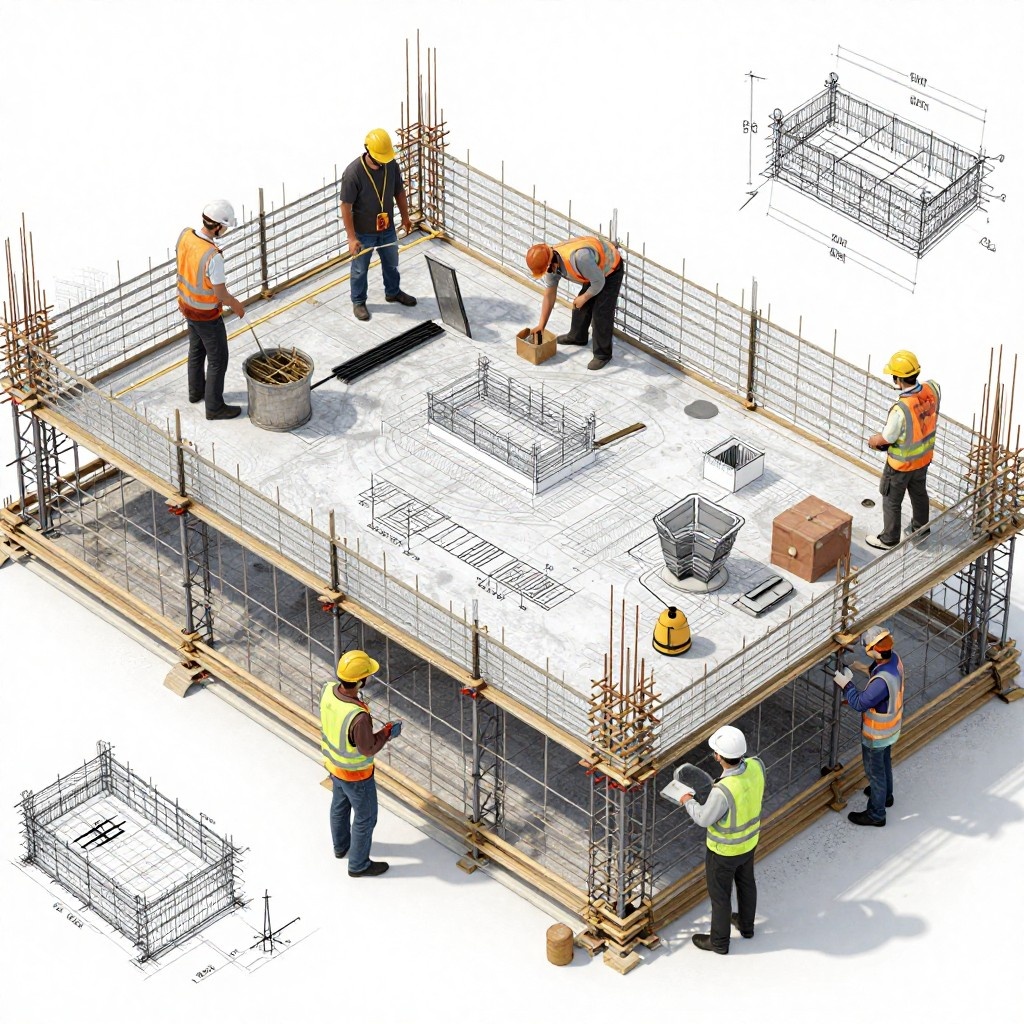In the realm of construction, the Request for Information (RFI) serves as a formal written process aimed at elucidating details within plans, drawings, specifications, and agreements. Despite its apparent simplicity, RFIs frequently pose challenges, often leading to delays, conflicts, and legal implications. Thus, a comprehensive understanding of RFIs becomes imperative for all stakeholders involved in construction projects. Contractors may utilize RFIs to seek project details during bidding, while subcontractors may employ them to clarify specifications during the construction phase.
At its core, an RFI in construction is a mechanism to bridge information gaps and ensure alignment among project participants. Whether it's clarifying a design detail, proposing a change, or identifying a deficiency, RFIs play a pivotal role in keeping construction projects on track and within scope.

Understanding Construction RFIs
Construction RFIs manifest in various forms, each tailored to address specific needs and challenges encountered during the project lifecycle. From design coordination to utility conflicts, the spectrum of RFIs encompasses a multitude of scenarios that arise in the dynamic environment of construction. Understanding these types is essential for effectively navigating the intricacies of project management and fostering collaboration among stakeholders.
The Evolution of RFIs
The evolution of RFIs in construction management mirrors the industry's shift towards greater specialization and formalization of processes. From the informal field memos of the post-Civil War era to the structured documentation of the modern RFI, the journey underscores the growing significance of clear communication and meticulous documentation in mitigating risks and resolving disputes.
The Importance of Construction RFIs
The significance of construction RFIs cannot be overstated, particularly in an industry where misinterpretations of contracts often lead to costly disputes. By fostering clarity and transparency, RFIs uphold the integrity of the construction process, ensuring that buildings are not only erected according to plan but also meet stringent quality and safety standards.
The importance of construction RFIs stems from several key factors:
Communication:
RFIs serve as a formal communication channel between stakeholders, facilitating the identification of potential issues before they escalate. Clear communication helps prevent misunderstandings and ensures that everyone involved in the project is on the same page.
Comprehension:
To avoid confusion, costly delays, and errors, all project participants must share a thorough understanding of project details. RFIs enable stakeholders to ask questions, clarify ambiguities, and add necessary detail to contract documents, ensuring alignment and clarity.
Documentation:
RFIs provide crucial documentation of any deviations from standard procedures or specifications that may affect safety, schedule, cost, or quality. This documentation serves as a record of decisions made throughout the project and can be invaluable in resolving disputes or claims.
Resolution:
Uncertainty can lead to delays and inefficiencies in construction projects. RFIs help resolve uncertainties promptly, providing direction and clarity to keep projects moving forward safely, productively, and professionally.
Risk Mitigation:
By addressing potential issues early on, RFIs help mitigate risks associated with construction projects. Identifying and resolving issues through RFIs can prevent costly rework, delays, and disputes, ultimately protecting project timelines and budgets.
Legal Compliance:
In many cases, RFIs are necessary to ensure compliance with legal and regulatory requirements. Proper documentation and communication through RFIs help demonstrate that project participants have fulfilled their obligations and responsibilities, reducing the risk of legal disputes or liabilities.
Overall, the effective use of construction RFIs is essential for promoting transparency, minimizing risks, ensuring project success, and upholding standards of safety and quality in the construction industry.

Crafting Effective Construction RFIs
Crafting an effective RFI is an art form that demands precision and clarity. From providing essential project details to articulating the inquiry concisely, mastering the nuances of RFI writing is paramount for eliciting timely and accurate responses from stakeholders.
Best Practices for Construction RFIs
Navigating the maze of construction RFIs requires more than just technical prowess — it demands a strategic approach. By adhering to best practices, such as standardizing formats and adopting a neutral tone, issuers can streamline the RFI process and enhance collaboration across project teams.
Implementing best practices for construction RFIs involves:
Establishing Clear RFI Procedures in Construction Contracts
Establishing clear RFI procedures in construction contracts is crucial for ensuring that all project participants understand how RFIs should be managed. This involves clearly outlining the steps involved in submitting, reviewing, and responding to RFIs, as well as identifying the individuals responsible for each stage of the process.
Defining Valid RFIs and Documentation Requirements
Defining what constitutes a valid RFI and outlining documentation requirements helps prevent misunderstandings and ensures that RFIs contain all necessary information for effective resolution. This includes specifying the information that should be included in an RFI, such as project details, the nature of the request, and any supporting documentation.
Setting Time Limits for Designer Responses
Setting time limits for designers to respond to RFIs helps maintain project momentum and prevent delays. By establishing clear deadlines for RFI responses, project teams can ensure that issues are addressed promptly and efficiently, reducing the risk of schedule disruptions.
Creating a Standardized RFI Format
Creating a standardized RFI format promotes consistency and clarity in communication. By using a consistent format for all RFIs, project teams can streamline the review and response process, making it easier to track and manage requests effectively.
Utilizing Digital Tools for Efficient RFI Management
Utilizing digital tools for efficient RFI management enables project teams to streamline the RFI process and improve collaboration. By leveraging software solutions designed for RFI management, teams can track, prioritize, and communicate about RFIs more effectively, reducing the risk of errors and delays.
Categorizing RFIs by Importance or Urgency
Categorizing RFIs by importance or urgency helps prioritize responses and allocate resources effectively. By identifying high-priority RFIs and addressing them promptly, project teams can minimize the impact of potential issues on project timelines and budgets.
Developing a System for Escalating Unresolved RFIs
Developing a system for escalating unresolved RFIs ensures that critical issues are addressed in a timely manner. By establishing clear procedures for escalating RFIs that require additional attention, project teams can prevent bottlenecks and minimize the risk of project delays.
Cultivating Personal Relationships Among Project Participants
Cultivating personal relationships among project participants fosters effective communication and collaboration. By building strong relationships, project teams can improve trust and understanding, making it easier to resolve issues and work together towards common goals.
Communicating RFI Protocols and Expectations
Communicating RFI protocols and expectations to all stakeholders ensures that everyone understands their role in the RFI process. By providing clear guidance on how RFIs should be submitted, reviewed, and addressed, project teams can minimize confusion and promote efficiency.
Agreeing on RFI Submission Methods with Project Partners
Agreeing on the method or system of RFI submission with project partners promotes consistency and collaboration. By establishing clear protocols for submitting and managing RFIs, project teams can streamline communication and ensure that everyone is on the same page.
By adhering to these best practices, construction teams can mitigate delays, improve communication, and deliver successful projects within budget and schedule constraints.
Navigating the Construction RFI Process
The journey of an RFI, from inception to resolution, follows a well-defined trajectory shaped by collaboration and communication. Understanding the lifecycle of an RFI equips project participants with the knowledge to navigate potential roadblocks and ensure timely resolution of inquiries.
The construction RFI process typically begins with a subcontractor or member of the general contractor’s site team initiating the RFI. This request is then routed through the project manager for review to ensure it meets the necessary criteria and contains all relevant information. Once approved, the RFI is forwarded to the design team or owner for final review and response.

Responsibility of Design Team or Owner
Upon receiving the RFI, the design team or owner is responsible for reviewing it thoroughly and providing a written response within a specific timeframe, typically ranging from 10 to 15 business days. The response should address the issue raised in the RFI and provide clear direction for resolution. If the issue remains unclear, the respondent may request additional information to facilitate a resolution and close the RFI.
Escalation and Documentation
If the RFI process fails to resolve the issue satisfactorily, it may be necessary to escalate the matter to a higher management level or involve legal counsel. Therefore, it is essential to carefully document all RFIs and responses, as these documents may serve as evidence in the event of a dispute.
Essential Elements of an RFI
When creating an RFI, certain elements should always be included to ensure clarity and effectiveness. These include numbering for tracking purposes, project identification details, requester and respondent information, a clear statement of the issue or request, a requested reply date, relevant background information, and supporting documentation such as plan sheets, markups, photos, or videos.
Standardization with RFI Templates
Using a standardized form or RFI template is recommended to streamline the RFI process and maintain consistency across projects.
Mediation and Change Orders
In large construction projects, a project manager often oversees the RFI process, mediating communication between various teams and ensuring proper documentation. An RFI response may lead to the issuance of a change order (CO), which entails a written request to modify the scope of work. Architects may issue a notice of potential change order (PCO) if uncertainty exists regarding the need for a change order. It is crucial to distinguish between RFIs and change orders, recording the latter in a change order log for comprehensive project management.
Responding to Construction RFIs
Responding to an RFI is more than just delivering answers — it's about fostering trust and collaboration among project partners. By offering prompt, comprehensive responses and leveraging supplementary materials, responders can instill confidence in their ability to address inquiries effectively.
Strategies for Reducing RFIs
Minimizing RFIs requires a proactive approach that addresses root causes and cultivates a culture of collaboration and accountability. By embracing strategies such as thorough document review and careful selection of project partners, stakeholders can mitigate the need for excessive RFIs and streamline project workflows.
Knowing When Not to Use a Construction RFI
Knowing when to wield the RFI card is as crucial as mastering its intricacies. Avoiding common misuses, such as treating RFIs as substitutes for other communication channels or contractual documents, ensures that RFIs remain a tool for clarity rather than confusion.
Leveraging Technology for Enhanced RFI Management
Harnessing the power of technology can supercharge the RFI process, transforming it from a logistical challenge into a streamlined workflow. Tools like Autodesk Construction Cloud offer a centralized platform for managing RFIs, enabling stakeholders to track, monitor, and collaborate on inquiries with ease.
FAQs
What are common abuses of construction RFIs?
Some common abuses of construction RFIs include submitting excessive RFIs for minor issues, using RFIs to shift blame or responsibility, and generating RFIs without proper research or documentation. These abuses can lead to project delays, confusion, and unnecessary disputes.
How can you reduce the number of RFIs in a project?
To reduce the number of RFIs in a project, improve communication channels, clarify project requirements upfront, provide comprehensive training to project team members, encourage proactive problem-solving, and utilize standardized templates and guidelines. Implementing digital tools for streamlined communication and documentation can also help minimize the need for RFIs.
When should you not use a construction RFI?
Construction RFIs should not be used when the information is readily available in project documents, when the issue can be resolved through informal communication, or in emergency situations requiring immediate action. Additionally, RFIs should not be used for matters outside the scope of the project or contractual obligations, or if the RFI process is being abused or misused for non-legitimate purposes.




